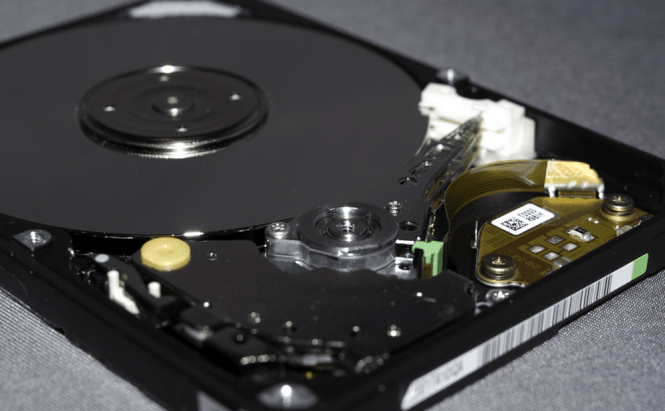 How to Manage Your Hard Drive Partitions
How to Manage Your Hard Drive Partitions
The hard disk is the hardware component where the data is stored. Basically, everything you keep on your PC is there: the operating system, applications, files, etc. A partition is a logical division of the hard drive, which is capable of acting like an individual entity. Theoretically, you can have just one single partition on a hard disk but that's very counterproductive as every time you will need to format the drive (and it will happen), you will lose all the data. This is why knowing how to create, delete, extend or shrink partitions is highly useful. Here's what you need to know:
Managing hard disk partitions without third-party software
Windows ships out with its own partition management tool so you don't have to install additional software if you don't want to. This guide is made for Windows 7 as it is the most popular in the world at the moment, but if you have a different version of the operating system, things aren't very different. In order to access the partition manager, you will need to go to Control Panel --> Administrative Tools and a new window will be automatically launched. Once there, click on the Disk Management button in the Storage category (in the left column). After a short period of time, during which the tool identifies your hard-disk and its partitions, you will have full access to play around with anything you want. However, don't mess around with drive C: (or whichever other partition you use to boot) as you might lose the operating system along with all the data on it. Furthermore, having a bootable recovery disk at hand could also prove to be prudent.
While in the Disk Management window, right-clicking on a drive allows you to shrink, extend, delete, format or change the letter of that respective partition:
- Shrinking a partition will decrease the amount of space on it while the surplus left will be transformed into unused space (which can be afterwards transformed into a new partition)
- Extending a partition allows you to increase the storage space of the specified drive but requires you to have unused space at your disposal,
- Deleting a partition will completely remove the respective drive and all the data stored on it, transforming into unused space.
- Formatting a partition is a process that makes the respective drive "usable" for Windows. It transforms unused space into an area that the operating system can work with. In most cases, you will have to choose between FAT32 and NTFS (modern operating systems utilize the latter).
- Changing the letter is pretty much self-explanatory. It lets you modify the letter of the respective partition. In case you have a large number of drives, this could help you easily distinguish between the ones you use for booting, for applications of for movies. Certain letters may be reserved for specific devices, so you won't be able to use them.
One thing to remember is that every operating system will steal space when creating partitions. What I mean is that if you have 500GB of unused space, partitioning it will result in a drive with a slightly smaller capacity. The more partitions you create the more space will disappear (will be reserved by the operating system, rather) and while the percentage of the space that goes missing is insignificant, if you work with huge amounts of space (>TB), you may notice a couple of missing GB.
Alternative solutions
If the partition manager provided by Windows is too difficult to control or doesn't provide the functionality that you require, you can always try alternative solutions. Here a few applications that will help you deal with your partitioning tasks for free:
 EaseUS Partition Master Home Edition
EaseUS Partition Master Home Edition
The free version of EaseUS Partition Master (called Home Edition) is one of the best solutions that you can find. Besides the usual functions, such as creating new partitions and deleting, resizing or shrinking them, this tool can also perform a few neat tricks, such as moving or hiding and unhiding your drives (all without risking data loss). Furthermore, this tool offers a copy wizard which will offer you a very easy way to extend a partition while also keeping all your files intact. EaseUS Partition Master can simultaneously work with 32 storage devices, supports drives of up to 4TB and is even capable of performing operations on partitions specific to Linux operating systems (EXT2/EXT3).
 Paragon Partition Manager 14 Free
Paragon Partition Manager 14 Free
Paragon Partition Manager is another reliable solution. Even though the link I provided says shareware, the application has a free trial version called Paragon Partition Manager 14 Free. What's really cool about this application is that it was designed to help users manage their partitions without risking data loss, thanks to its patented technology. Partition Manager 14 Free only offers basic functionality (creating new partitions, deleting existing ones, resizing drives and formatting them), but regular users won't need much more than that. Add to that its well-designed interface and the several wizards that will assist you in your tasks, and you have a free partition manager that anyone can use.
 Minitool Partition Wizard Home Edition
Minitool Partition Wizard Home Edition
Minitool Partition Wizard Home Edition may be the last entry on our list, but that surely doesn't mean that it's not an effective partition manager. This tool will help you create, extend, shrink, delete, format, change drive letters and copy disk partitions. Another really interesting feature is that the application is capable of converting your FAT32 drives into NTFS partitions. Additional functionality includes the ability to test the disk surface, rebuild the Master Boot Record (MBR), and a 1GB data recovery tool.





